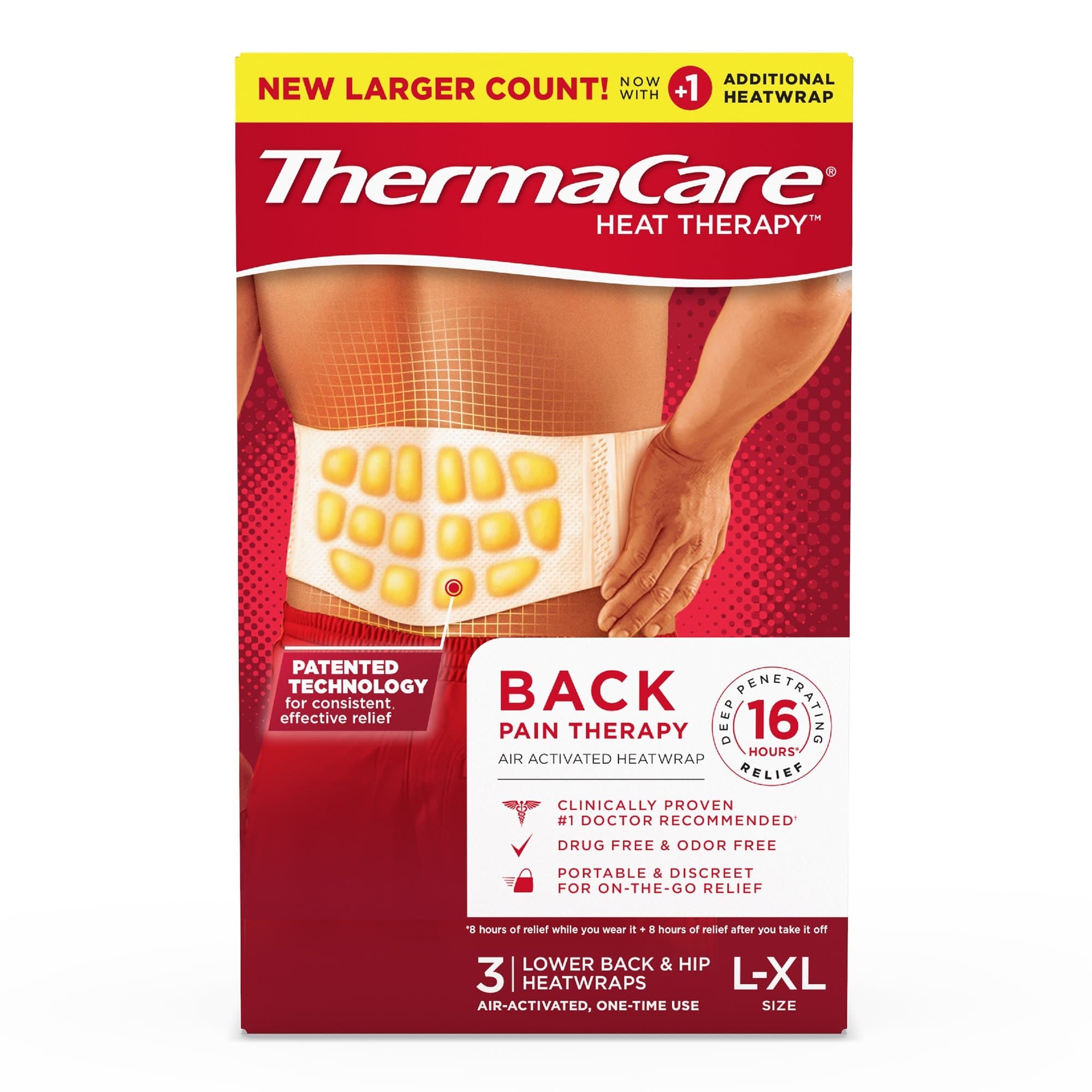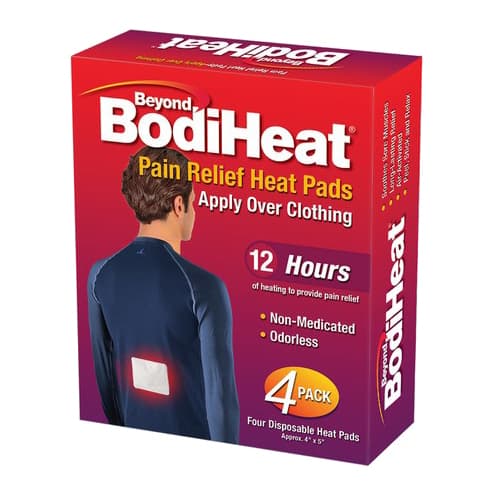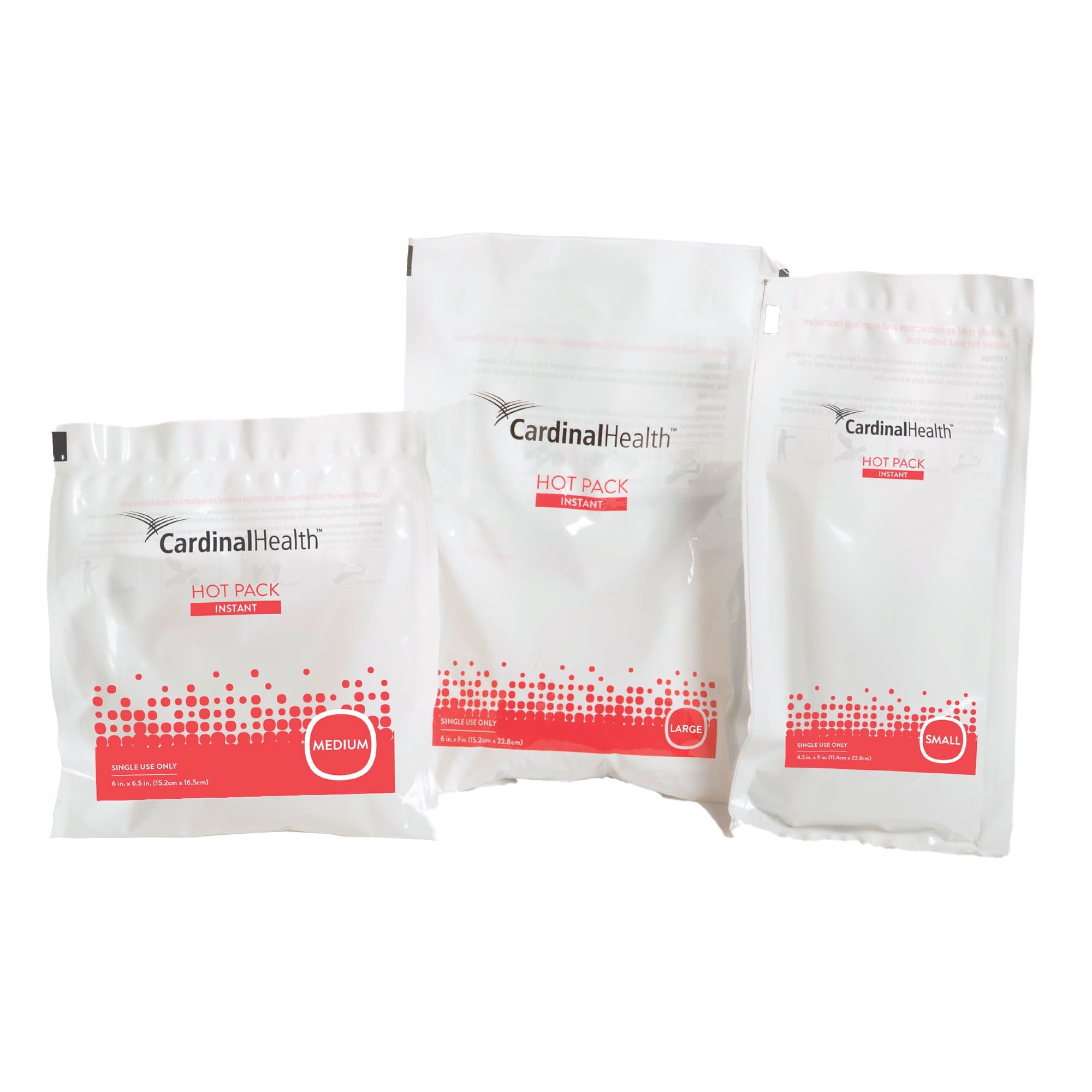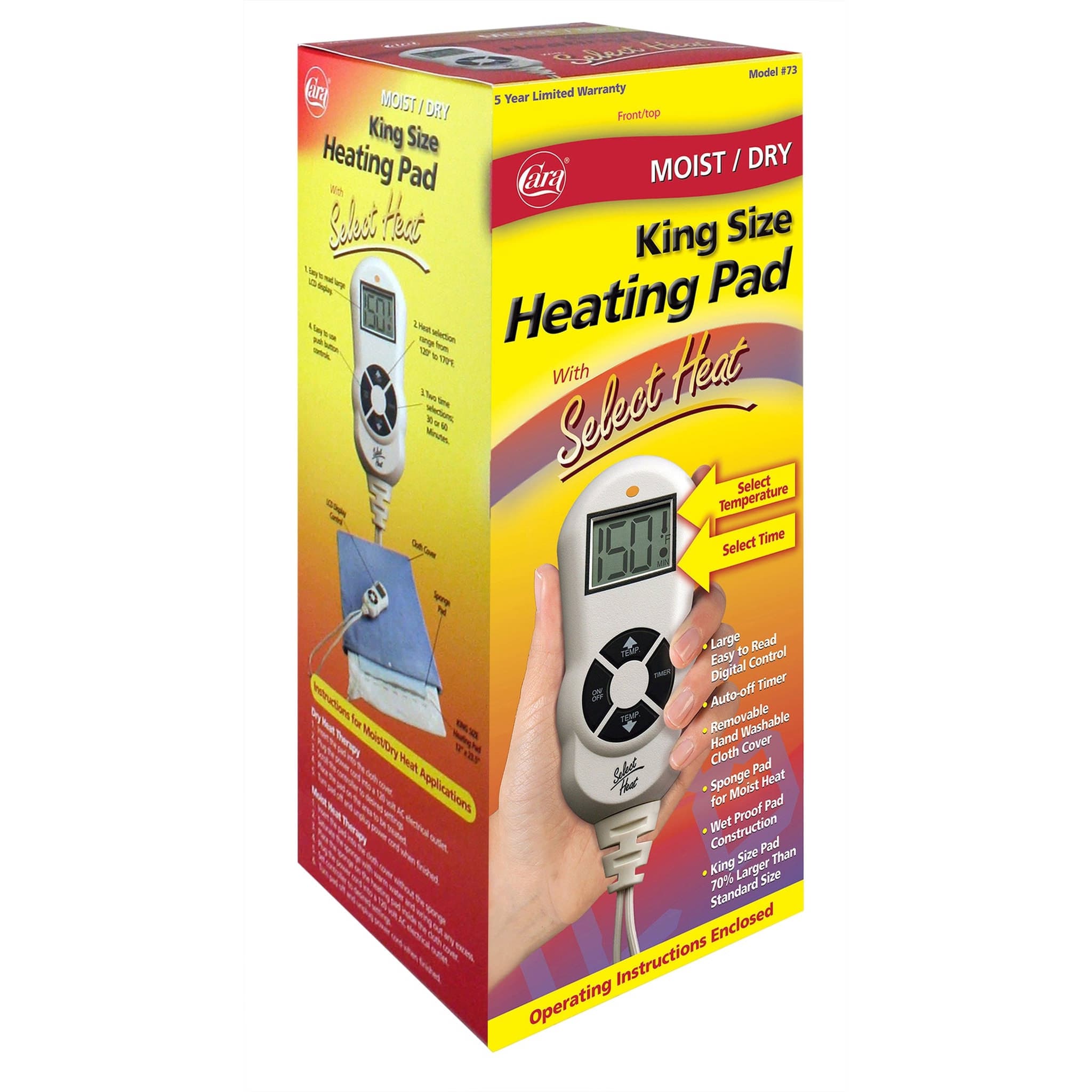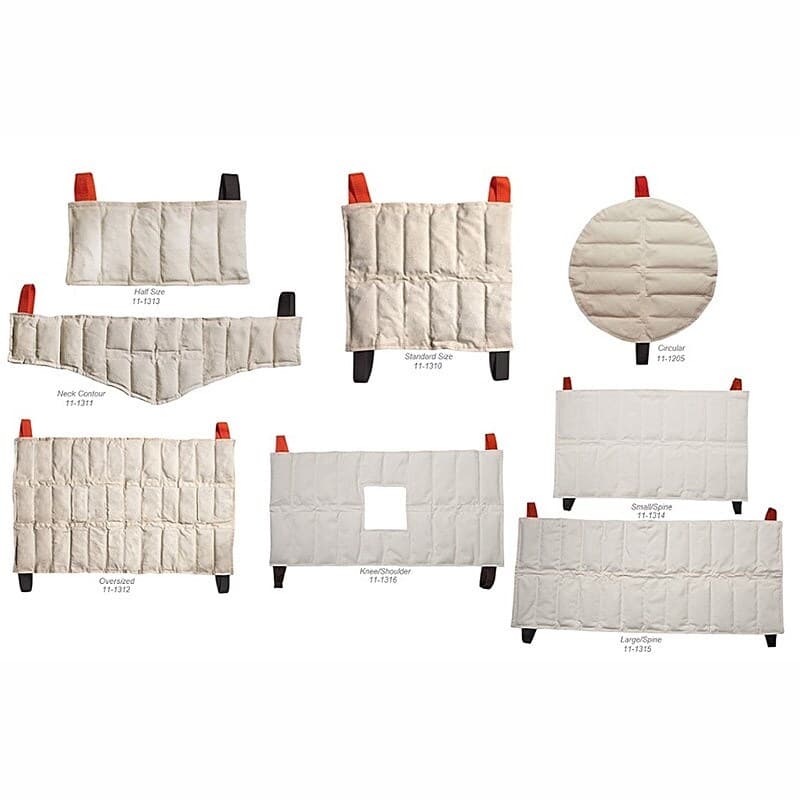
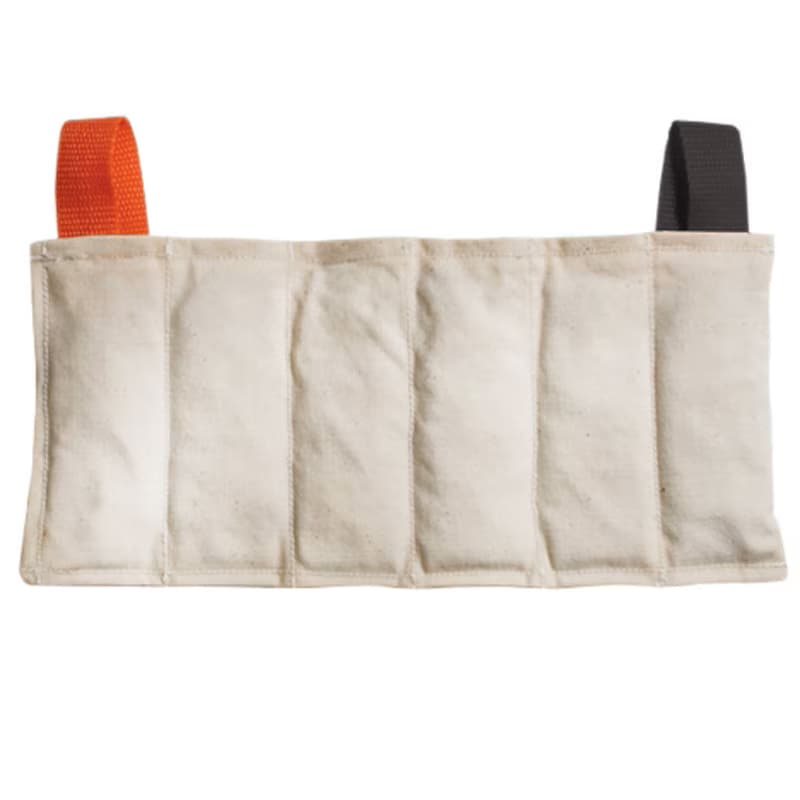
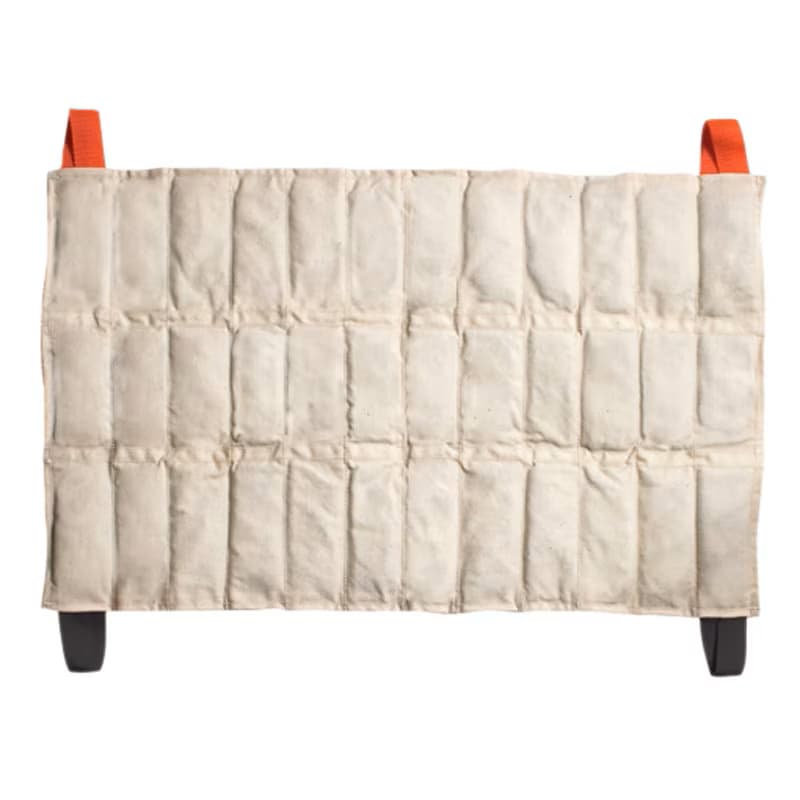

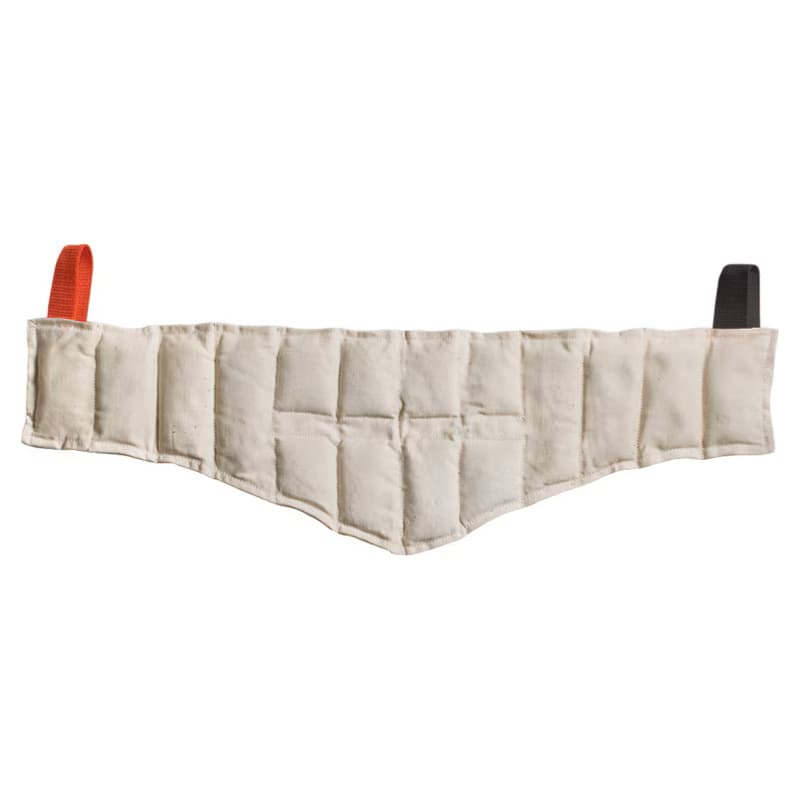

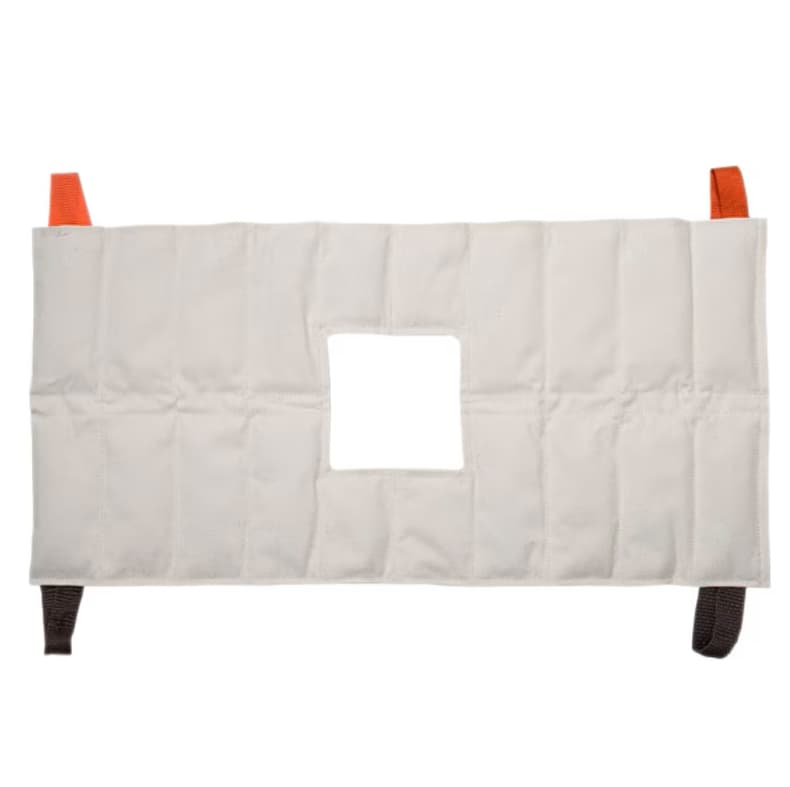

Relief Pak HotSpot Moist Heat Pack
Starts From
Description
The ReliefPak Moist Heat Pack is the go-to solution to ease aches and pains from arthritis, back pain, muscle strains, stiff neck, sprains, stiff joints, bruises, general soreness and spasms. Why a Moist Heat Pack and not a heating pad? Moist heat is more effective in deeper tissue heating and penetrates more than dry heat at the same temperature. Ready for use after less than an hour in either the stove, microwave or other heating unit. Ideal for use in recovery post-injury and post-workout with a material that conforms to any body part and is pliable when heated. Highly recommended by physiotherapists, physicians, chiropractors, athletic trainers and kinesiologists. Moist Heat Packs are safe for adults and children and are easy to travel with. The heat packs are Latex-free.
Features
- Covers are washable.
- Covers are filled with foam and additional terry.
- Gives at least 30 minutes of therapeutic moist heat.
- Apply pack with Relief Pak cover or heavy towel.
- Hook and loop fasteners keep moist heat packs in place in cover.
- When treatment is complete pack can be stored in a plastic bag in freezer.
- Moist heat pack is a simple and effective method of applying localized heat.
- Terry hot pack cover allows therapeutic moist heat to penetrate without burning the skin.
Heat your moist heat pack
- Hold pack by corner loops and gently shake. This distributes the filler and permits it to swell (absorb water) evenly.
- Place pack in heating unit (for home, use a large pot or pan).
- Fill heating unit with enough water to keep pack completely immersed.
- Let pack soak for at least 2 hours. Pack will become completely swollen with water. This long soaking procedure is necessary only with a new pack. After initial use, pack can be prepared by soaking for 15-20 minutes.
- If microwaving, place hot pack in microwave safe container and cover completely with water. Place container in microwave and heat at full power until water temperature reaches 160°F (-71°C).
- If using stove place pack in heating vessel and slowly increase water temperature to 160°F (-71°C). Let pack soak at 160°F (-71°C) for 20 minutes.
Use with Moist Heat Pack Cover
Two basic cover designs are available. The pocketed cover is designed for simplicity, the flat cover is designed for versatility.
Warning: If cover is too hot, use additional toweling.
Pocketed cover (oversize, standard and neck size packs) (All Covers Sold Separately)
- Place cover on a flat surface with the pocket facing up and the flap open.
- Remove pack from heating unit with tongs by gently lifting loop tab.
- Place pack into cover; tuck flap into pocket, or close with hook and loop tabs (available on certain models). Note: neck covers do not have flaps.
Flat cover (oversize, standard and half size packs) (All Covers Sold Separately)
- Place cover on a flat surface with the hook and loop facing up and the flap open.
- Remove pack from heating unit with tongs by gently lifting loop tab.
- Place pack on the left side of the cover
- Fold cover over the pack. Make sure the hook/loop fasteners are aligned.'
- Press hook/loop up, pack in middle, 2nd cover hook/loop down).
Note: Oversize pack can be covered by 1 oversize cover or 2 standard covers (1st cover hook/loop up, pack in middle, 2nd cover hook/loop down).
Care for moist heat pack cover :
Covers can be laundered in washing machine and dryer. Wash separately, no bleach. Max drying temperature: 160°F (-71°C). Fasten hook and loop closures together before laundering to avoid hook snagging terry material; some models include extra loop tabs to cover exposed hook during laundering. Avoid ironing.
Frequent use of moist heat pack :
If pack is going to be used for regular or frequent treatments, keep it in water (either in the heating unit or in a covered pot on the stove).
Storage of moist heat pack :
When pack is to be stored for an extended period of time, it should be kept moist and cold. Place wet pack in a plastic bag, seal it and store it in freezer. Alternatively, you can permit pack to dry thoroughly and then store it. When stored in this manner the filler becomes hard and caked. This does not harm the pack, but will require a much longer time for reheating.
CAUTION
- Do not apply hot pack directly to skin (always use toweling or hot pack covers)
- Individuals with circulatory problems should consult with physician before use
- Do not use on oversensitive skin
- Do not sit or lie on pack
- Limit treatment to 30 minutes per application
- Do not use directly over cuts, abrasions or wounds
- Make sure pack is fully immersed in water before heating
- Do not add chlorine additive to water
Specifications
| Model No. | Size | Dimension |
| 11-1205 | Circular | 10 Inch Diameter |
| 11-1310 | Standard | 10 Inch x 12 Inch |
| 11-1311 | Neck Contour | 7 Inch x 24 Inch |
| 11-1312 | Oversize | 15 Inch x 24 Inch |
| 11-1313 | Half Size | 5 Inch x 12 Inch |
| 11-1314 | Spine Small Size | 10 Inch x 18 Inch |
| 11-1315 | Spine Large Size | 10 Inch x 24 Inch |
| 11-1316 | Knee Shoulder Size | 10 Inch x 20 Inch |
Warranty
- The product warranty is applicable as per the terms and conditions provided by the product manufacturer.
Please call us for specific details.
Return
- No returns will be accepted after 30 days from the date of shipment.
- All returns are subject to a restocking fee as per manufacturers terms and conditions.
- All returns must have an RGA number (Returned Goods Authorization), unauthorized returns will not be accepted.
- We do not guarantee fulfillment of any desired purpose or product suitability to the user and this will not be considered as a valid reason for return.
- The products must be new, unused condition, not tampered with, in original packaging and returned at the customers expense in the original packaging.
- If your return is not due to any manufacturing defect then the original shipping cost will be deducted from the total refund.
- Hygiene, bath and toilet items cannot be returned once opened or used.
- Standard manufacturer terms and conditions apply for return policy of this product.
Please call us for specific details.
Description
The ReliefPak Moist Heat Pack is the go-to solution to ease aches and pains from arthritis, back pain, muscle strains, stiff neck, sprains, stiff joints, bruises, general soreness and spasms. Why a Moist Heat Pack and not a heating pad? Moist heat is more effective in deeper tissue heating and penetrates more than dry heat at the same temperature. Ready for use after less than an hour in either the stove, microwave or other heating unit. Ideal for use in recovery post-injury and post-workout with a material that conforms to any body part and is pliable when heated. Highly recommended by physiotherapists, physicians, chiropractors, athletic trainers and kinesiologists. Moist Heat Packs are safe for adults and children and are easy to travel with. The heat packs are Latex-free.
Features
- Covers are washable.
- Covers are filled with foam and additional terry.
- Gives at least 30 minutes of therapeutic moist heat.
- Apply pack with Relief Pak cover or heavy towel.
- Hook and loop fasteners keep moist heat packs in place in cover.
- When treatment is complete pack can be stored in a plastic bag in freezer.
- Moist heat pack is a simple and effective method of applying localized heat.
- Terry hot pack cover allows therapeutic moist heat to penetrate without burning the skin.
Heat your moist heat pack
- Hold pack by corner loops and gently shake. This distributes the filler and permits it to swell (absorb water) evenly.
- Place pack in heating unit (for home, use a large pot or pan).
- Fill heating unit with enough water to keep pack completely immersed.
- Let pack soak for at least 2 hours. Pack will become completely swollen with water. This long soaking procedure is necessary only with a new pack. After initial use, pack can be prepared by soaking for 15-20 minutes.
- If microwaving, place hot pack in microwave safe container and cover completely with water. Place container in microwave and heat at full power until water temperature reaches 160°F (-71°C).
- If using stove place pack in heating vessel and slowly increase water temperature to 160°F (-71°C). Let pack soak at 160°F (-71°C) for 20 minutes.
Use with Moist Heat Pack Cover
Two basic cover designs are available. The pocketed cover is designed for simplicity, the flat cover is designed for versatility.
Warning: If cover is too hot, use additional toweling.
Pocketed cover (oversize, standard and neck size packs) (All Covers Sold Separately)
- Place cover on a flat surface with the pocket facing up and the flap open.
- Remove pack from heating unit with tongs by gently lifting loop tab.
- Place pack into cover; tuck flap into pocket, or close with hook and loop tabs (available on certain models). Note: neck covers do not have flaps.
Flat cover (oversize, standard and half size packs) (All Covers Sold Separately)
- Place cover on a flat surface with the hook and loop facing up and the flap open.
- Remove pack from heating unit with tongs by gently lifting loop tab.
- Place pack on the left side of the cover
- Fold cover over the pack. Make sure the hook/loop fasteners are aligned.'
- Press hook/loop up, pack in middle, 2nd cover hook/loop down).
Note: Oversize pack can be covered by 1 oversize cover or 2 standard covers (1st cover hook/loop up, pack in middle, 2nd cover hook/loop down).
Care for moist heat pack cover :
Covers can be laundered in washing machine and dryer. Wash separately, no bleach. Max drying temperature: 160°F (-71°C). Fasten hook and loop closures together before laundering to avoid hook snagging terry material; some models include extra loop tabs to cover exposed hook during laundering. Avoid ironing.
Frequent use of moist heat pack :
If pack is going to be used for regular or frequent treatments, keep it in water (either in the heating unit or in a covered pot on the stove).
Storage of moist heat pack :
When pack is to be stored for an extended period of time, it should be kept moist and cold. Place wet pack in a plastic bag, seal it and store it in freezer. Alternatively, you can permit pack to dry thoroughly and then store it. When stored in this manner the filler becomes hard and caked. This does not harm the pack, but will require a much longer time for reheating.
CAUTION
- Do not apply hot pack directly to skin (always use toweling or hot pack covers)
- Individuals with circulatory problems should consult with physician before use
- Do not use on oversensitive skin
- Do not sit or lie on pack
- Limit treatment to 30 minutes per application
- Do not use directly over cuts, abrasions or wounds
- Make sure pack is fully immersed in water before heating
- Do not add chlorine additive to water
Specifications
| Model No. | Size | Dimension |
| 11-1205 | Circular | 10 Inch Diameter |
| 11-1310 | Standard | 10 Inch x 12 Inch |
| 11-1311 | Neck Contour | 7 Inch x 24 Inch |
| 11-1312 | Oversize | 15 Inch x 24 Inch |
| 11-1313 | Half Size | 5 Inch x 12 Inch |
| 11-1314 | Spine Small Size | 10 Inch x 18 Inch |
| 11-1315 | Spine Large Size | 10 Inch x 24 Inch |
| 11-1316 | Knee Shoulder Size | 10 Inch x 20 Inch |
Warranty
- The product warranty is applicable as per the terms and conditions provided by the product manufacturer.
Please call us for specific details.
Return
- No returns will be accepted after 30 days from the date of shipment.
- All returns are subject to a restocking fee as per manufacturers terms and conditions.
- All returns must have an RGA number (Returned Goods Authorization), unauthorized returns will not be accepted.
- We do not guarantee fulfillment of any desired purpose or product suitability to the user and this will not be considered as a valid reason for return.
- The products must be new, unused condition, not tampered with, in original packaging and returned at the customers expense in the original packaging.
- If your return is not due to any manufacturing defect then the original shipping cost will be deducted from the total refund.
- Hygiene, bath and toilet items cannot be returned once opened or used.
- Standard manufacturer terms and conditions apply for return policy of this product.
Please call us for specific details.
Starts From





